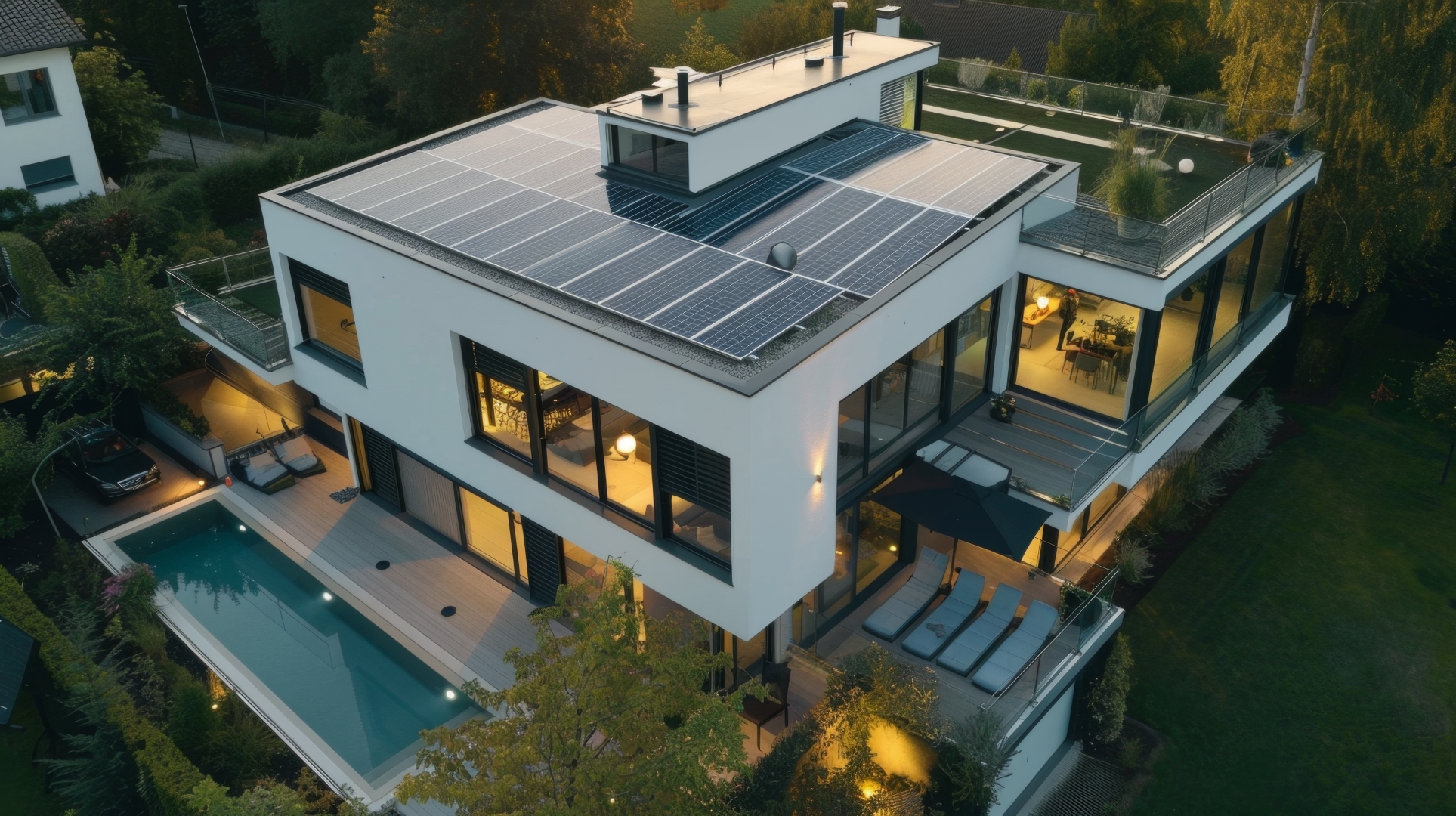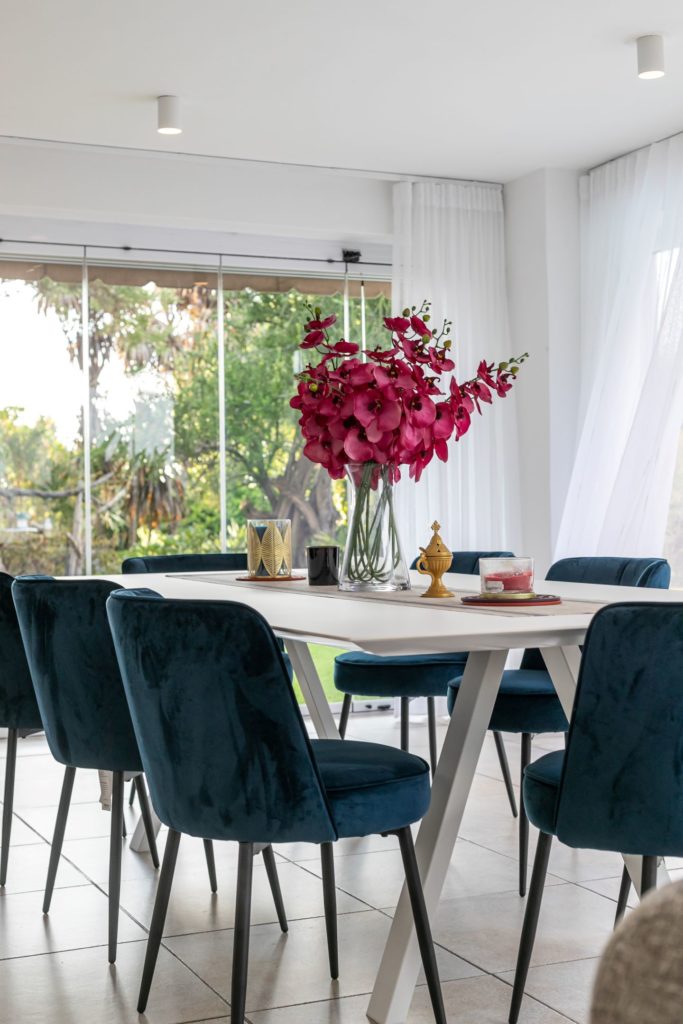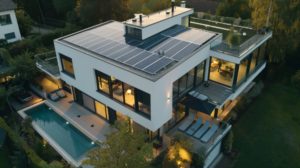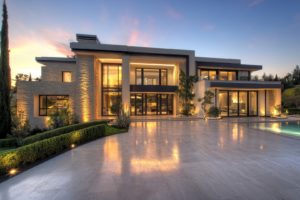
Designing for Tomorrow: Smart Energy Solutions for South African Homes
In a country where power outages have become part of daily life, creating energy-independent homes isn’t just about sustainability—it’s about maintaining quality of life. Modern residential architecture in South Africa now demands intelligent design solutions that reduce reliance on the national grid while enhancing comfort and aesthetics. At CF Architects, we’ve been pioneering energy-efficient designs tailored to South Africa’s unique climate challenges, particularly in Johannesburg’s variable conditions.

The New Luxury: Energy Independence in Residential Design
The definition of luxury in South African homes has evolved dramatically. While spacious interiors and premium finishes remain desirable, true luxury now encompasses uninterrupted power, comfortable indoor temperatures regardless of external conditions, and manageable utility costs. Energy-efficient design has transformed from an eco-conscious choice to an essential consideration for discerning homeowners across Sandton, Bryanston, and beyond.
The increasing frequency of load shedding has accelerated this shift, with homeowners seeking architectural solutions that offer both immediate comfort and long-term savings. Our clients increasingly prioritize energy autonomy alongside aesthetic appeal when commissioning new homes or renovations.
Passive Design: The Foundation of Efficient Homes
Before considering technological interventions, the most impactful energy efficiency strategies begin with thoughtful architectural design. Passive design principles—when correctly applied to the Highveld’s climate—can reduce heating and cooling requirements by up to 80%.
Orientation remains the cornerstone of passive design. In the Southern Hemisphere, north-facing living spaces capture winter sun while allowing for effective summer shading. At CF Architects, we analyze each site’s specific conditions to optimize orientation, considering not just the sun’s path but also prevailing winds that can enhance natural cooling.
The strategic placement of thermal mass—using materials like stone, concrete, or brick—enables heat absorption during sunny winter days and gradual release during cool evenings. This approach is particularly effective in Johannesburg’s climate, where significant temperature fluctuations between day and night occur throughout the year.
Carefully positioned windows and doors create effective cross-ventilation paths, reducing or eliminating the need for mechanical cooling during transitional seasons. When combined with appropriately sized roof overhangs that block summer sun while admitting winter warmth, these passive strategies form the foundation of truly efficient homes.
Advanced Glazing: The Revolution in Window Technology
Windows typically represent the weakest link in a building’s thermal envelope, but advanced glazing technologies have transformed this traditional vulnerability into an opportunity for enhanced performance. Low-emissivity (Low-E) glass has emerged as a game-changer for Fourways and Sandton homes seeking both views and energy efficiency.
This specialized glazing features an invisible metallic coating that reflects infrared energy while allowing visible light to pass through. The result is windows that maintain indoor temperatures more effectively while still providing abundant natural light. In the Highveld’s climate, where both heating and cooling needs exist seasonally, Low-E glass provides year-round benefits.
The performance gains are substantial—properly specified Low-E windows can reduce heat transfer by 30-50% compared to conventional glazing. For homeowners, this translates to reduced heating and cooling costs while enhancing comfort by eliminating the cold or hot spots typically experienced near windows.
Insulation Excellence: The Hidden Performance Enhancer
Proper insulation represents the most cost-effective energy efficiency investment, yet it remains frequently overlooked or inadequately implemented in South African homes. The Highveld’s climate demands comprehensive insulation strategies that address both summer heat and winter chill.
Roof insulation deserves particular attention, as an uninsulated roof can allow up to 35% of a home’s heat loss in winter while permitting excessive heat gain during summer. Current best practices go beyond the minimum requirements of SANS 10400-XA, with high-performance homes featuring insulation R-values of 4.0 m²K/W or higher in ceiling spaces.
Foundation insulation, though less commonly discussed, provides significant comfort benefits in the Johannesburg climate. Insulating slab edges or using fully insulated raft foundations prevents the thermal bridging that can create uncomfortable cold floors during winter months. This approach is particularly valuable for homes incorporating underfloor heating systems, as it dramatically improves efficiency by directing heat upward into living spaces rather than losing it to the ground.
Wall insulation completes the thermal envelope, with cavity wall construction or external insulation systems offering superior performance to traditional single-leaf brick walls. These approaches effectively buffer indoor spaces from external temperature fluctuations, creating more stable and comfortable internal environments while reducing heating and cooling demands.
Solar Power: Harnessing South Africa's Abundant Sunshine
South Africa’s solar resource is among the world’s best, with Johannesburg receiving approximately 3,000 hours of sunshine annually. This abundant resource offers an ideal opportunity for photovoltaic (PV) systems that convert sunlight directly into electricity.
Modern solar PV technology has evolved dramatically, with today’s panels offering higher efficiency, improved aesthetics, and longer lifespans than earlier generations. Integration of solar arrays into architectural design has similarly advanced, with options ranging from conventional roof-mounted systems to building-integrated photovoltaics that function as both power generators and architectural elements.
The economics of solar power have shifted decisively in the homeowner’s favor. System costs have declined by more than 80% over the past decade, while electricity tariffs continue to rise at above-inflation rates. For homeowners in Bryanston and surrounding areas, well-designed solar systems now typically offer payback periods of 4-6 years, followed by decades of essentially free electricity.
Battery Storage: The Key to 24/7 Energy Security
Solar power’s natural limitation—its availability only during daylight hours—has been addressed through advances in battery storage technology. Modern lithium-ion battery systems offer the performance and reliability needed to provide genuine energy security for South African homes.
These systems store excess solar energy produced during the day for use during evenings or load shedding periods. The technology has matured significantly, with today’s residential batteries offering 10+ year lifespans, maintenance-free operation, and smart management systems that optimize performance and longevity.
When properly sized and integrated with solar PV systems, battery storage can provide complete protection from load shedding while maximizing self-consumption of solar energy. For many homeowners in Sandton and Fourways, the psychological benefit of uninterrupted power—eliminating the disruption and uncertainty of load shedding—justifies the investment independently of the long-term financial returns.
Gas Integration: Complementary Energy for Critical Functions
Liquefied Petroleum Gas (LPG) offers an effective complement to electrical systems in South African homes. When thoughtfully integrated into architectural designs, gas systems provide resilience for critical functions like cooking and water heating.
Gas cooking continues to be preferred by many homeowners and chefs for its precise control and continues functioning during power outages. Modern gas hobs combine this reliability with sleek, contemporary aesthetics that enhance kitchen designs.
Gas water heating, either through instantaneous systems or high-efficiency storage models, reduces electricity demand during peak periods. When combined with solar thermal collectors, these systems can provide highly efficient hot water with minimal operating costs.
The integration of gas systems requires careful planning during the architectural design phase. Considerations include proper ventilation, safe installation pathways, and convenient access for gas bottle exchange or connection to reticulated supplies where available.
Integrated Systems: The Smart Home Advantage
The true potential of energy-efficient design emerges when various components work as an integrated system rather than isolated elements. Smart home technology enables this integration, optimizing performance across multiple energy sources and usage patterns.
Modern energy management systems can automatically shift loads to the most cost-effective energy source, store excess solar production in batteries, and prioritize critical systems during limited supply periods. These systems provide homeowners with unprecedented control and visibility over their energy consumption through smartphone applications and dashboards.
Heat pumps represent another intelligent integration opportunity, using a fraction of the electricity of conventional resistance heating to produce hot water. When powered by solar PV systems during daylight hours, heat pumps can provide essentially free hot water while reducing battery storage requirements.
Bringing It All Together: The Architect's Role
Creating truly energy-efficient homes requires holistic thinking that integrates technical performance with aesthetic and functional goals. This integration is the essence of the architectural approach at CF Architects, where energy considerations inform design decisions from the earliest concept stages.
Through careful orientation, thoughtful space planning, appropriate material selection, and integration of renewable energy systems, we create homes that perform exceptionally well while maintaining visual appeal and functionality. The result is architecture that responds intelligently to South Africa’s energy challenges while enhancing the quality of life for inhabitants.
For homeowners in Johannesburg’s northern suburbs contemplating new builds or renovations, engaging with architects who understand both the technical and aesthetic dimensions of energy efficiency isn’t just about creating sustainable buildings—it’s about designing homes that offer genuine resilience, comfort, and long-term value in an increasingly unpredictable energy landscape.
CF Architects specializes in residential design across Johannesburg’s northern suburbs, with particular expertise in energy-efficient luxury homes suited to South Africa’s unique climate and energy challenges.
Most Recent Articles

Reimagining Home: The Art and Science of Open Plan Living
In the sun-drenched landscapes of Johannesburg’s northern suburbs, a quiet revolution has been transforming residential architecture for the past decade.

Transform Your Home: Designing Ultimate Outdoor Entertainment Spaces
In Johannesburg’s sun-blessed climate, outdoor living transcends luxury to become an essential component of modern home design. As Highveld homeowners

Designing for Tomorrow: Smart Energy Solutions for South African Homes
In a country where power outages have become part of daily life, creating energy-independent homes isn’t just about sustainability—it’s about

Designing Timeless Modern Family Homes: Creating Enduring Spaces for South African Living
In Johannesburg’s ever-evolving residential landscape, the quest for a home that balances contemporary elegance with lasting appeal presents both challenges
I'd Like More Information
CHOOSE A PLAN THATS RIGHT FOR YOU
Don't miss out on our latest news and offers - subscribe to our newsletter!
No Obligation, Complimentary Meeting.
